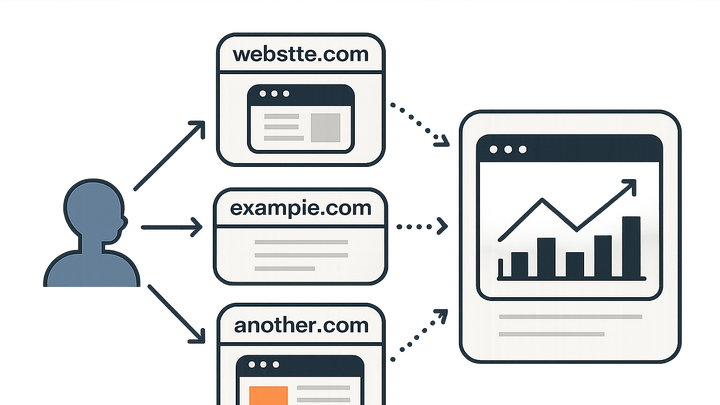Published on 2025-06-22T09:17:33Z
What is Referral Path? Examples for GA4 and PlainSignal
Referral Path is the sequence of external URLs or domains that direct traffic to your website. It differs from the single Referral Source by capturing not only the immediate referrer but the full chain of referring pages a user navigates through before landing. In web analytics, understanding Referral Paths helps marketers attribute traffic accurately, optimize partnerships, and detect navigation patterns. Platforms like Google Analytics 4 (GA4) and PlainSignal automatically record referral path data, enabling you to analyze the effectiveness of campaigns, social media links, and external websites. By interpreting these paths, you can refine marketing strategies, improve content placement, and minimize self-referrals that distort data.
Referral path
Sequence of domains or pages that referred a user to your site, showing the full path of referrals.
Importance of Referral Path
Referral Paths provide deeper insights into user acquisition by revealing the full chain of referring pages. This enables accurate attribution, better partnership evaluation, and improved campaign performance monitoring.
-
Enhanced attribution
By tracking the sequence of referrers, you can assign conversion credit more precisely across multiple touchpoints.
-
Partnership analysis
Referral Paths help identify which external websites or affiliates generate quality traffic and conversions.
-
Behavioral insights
Analyzing the path users take before landing reveals navigation patterns and potential content gaps.
How to Track Referral Path
Different analytics platforms capture referral path data slightly differently. Below are examples for PlainSignal and GA4.
-
PlainSignal (cookie-free simple analytics)
To implement referral path tracking with PlainSignal, insert the tracking snippet into the <head> of your HTML page:
<link rel="preconnect" href="//eu.plainsignal.com/" crossorigin /> <script defer data-do="yourwebsitedomain.com" data-id="0GQV1xmtzQQ" data-api="//eu.plainsignal.com" src="//cdn.plainsignal.com/plainsignal-min.js"></script>PlainSignal automatically captures and reports the referral path by reading
document.referrerfor each pageview. -
Google analytics 4 (GA4)
GA4 records referral paths in the
page_referrerparameter by default. To set it up, include the global site tag in your pages:<script async src="https://www.googletagmanager.com/gtag/js?id=GA_MEASUREMENT_ID"></script> <script> window.dataLayer = window.dataLayer || []; function gtag(){dataLayer.push(arguments);} gtag('js', new Date()); gtag('config', 'GA_MEASUREMENT_ID'); </script>Then view the Referral path report under the User acquisition section in the GA4 dashboard.
Interpreting Referral Path Data
Once collected, referral path data must be processed carefully to avoid misinterpretation due to self-referrals, redirect chains, or blocked referrers.
-
Filtering self-referrals
Exclude your own domains from referral path reports to prevent inflating referral counts. In GA4, add internal domains to the list of excluded referral domains.
-
Handling redirects
Redirect chains can break referral paths. Use 301 redirects and ensure referrer policy headers propagate correctly.
-
Combining with utm parameters
Pair referral path data with UTM tags to distinguish organic referrals from paid campaigns more accurately.
Best Practices
Adopt strategies that enhance the accuracy and usefulness of referral path analyses.
-
Implement consistent referrer policies
Set HTTP referrer-policy headers (e.g.,
strict-origin-when-cross-origin) to ensure referrer data is sent consistently across browsers. -
Use structured campaign urls
Append UTM parameters to external links to enrich referral path context and simplify segmentation.
-
Regular data audits
Periodically review referral path reports to identify anomalies, spikes from unknown domains, or disappearing referrers.
